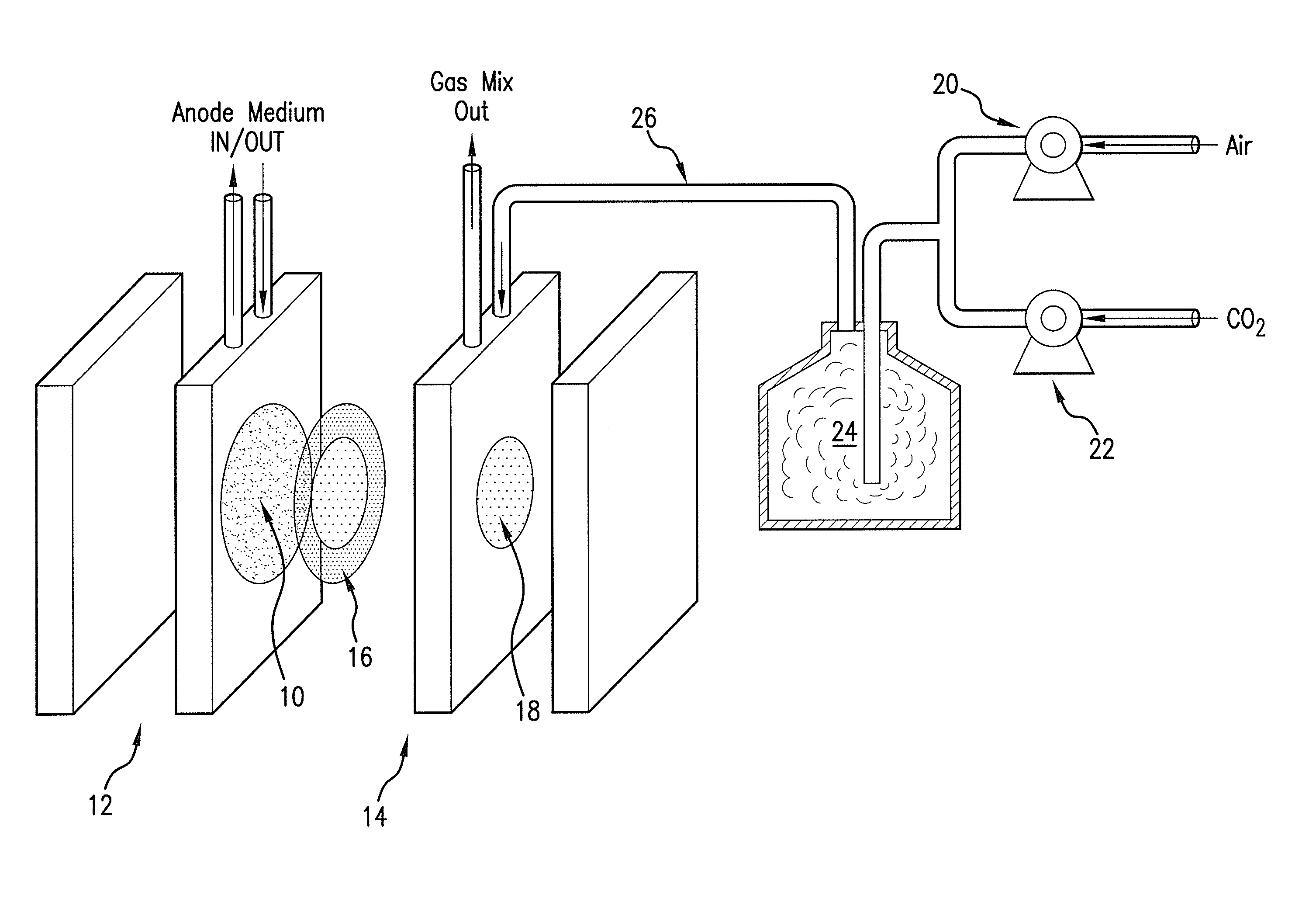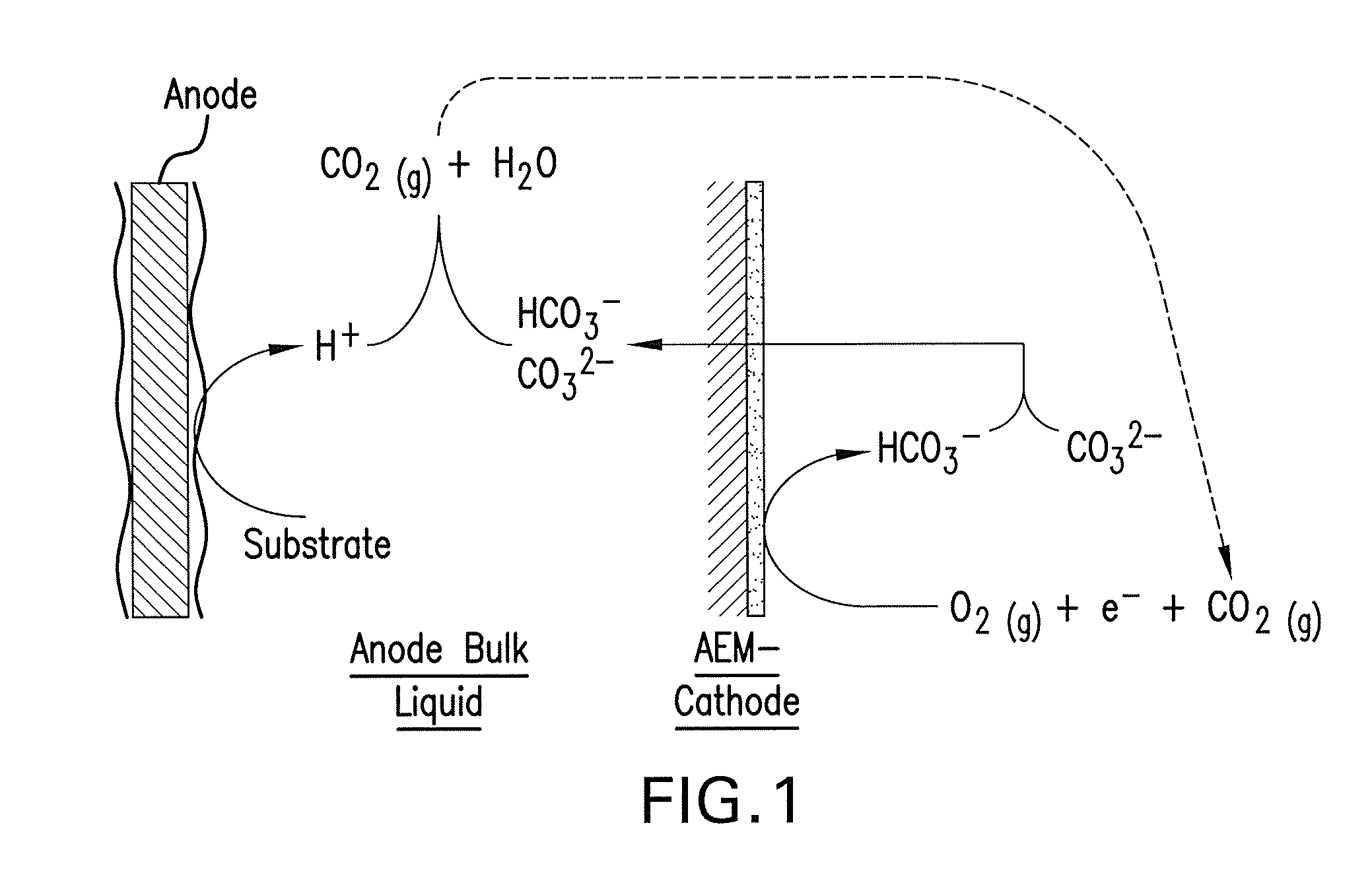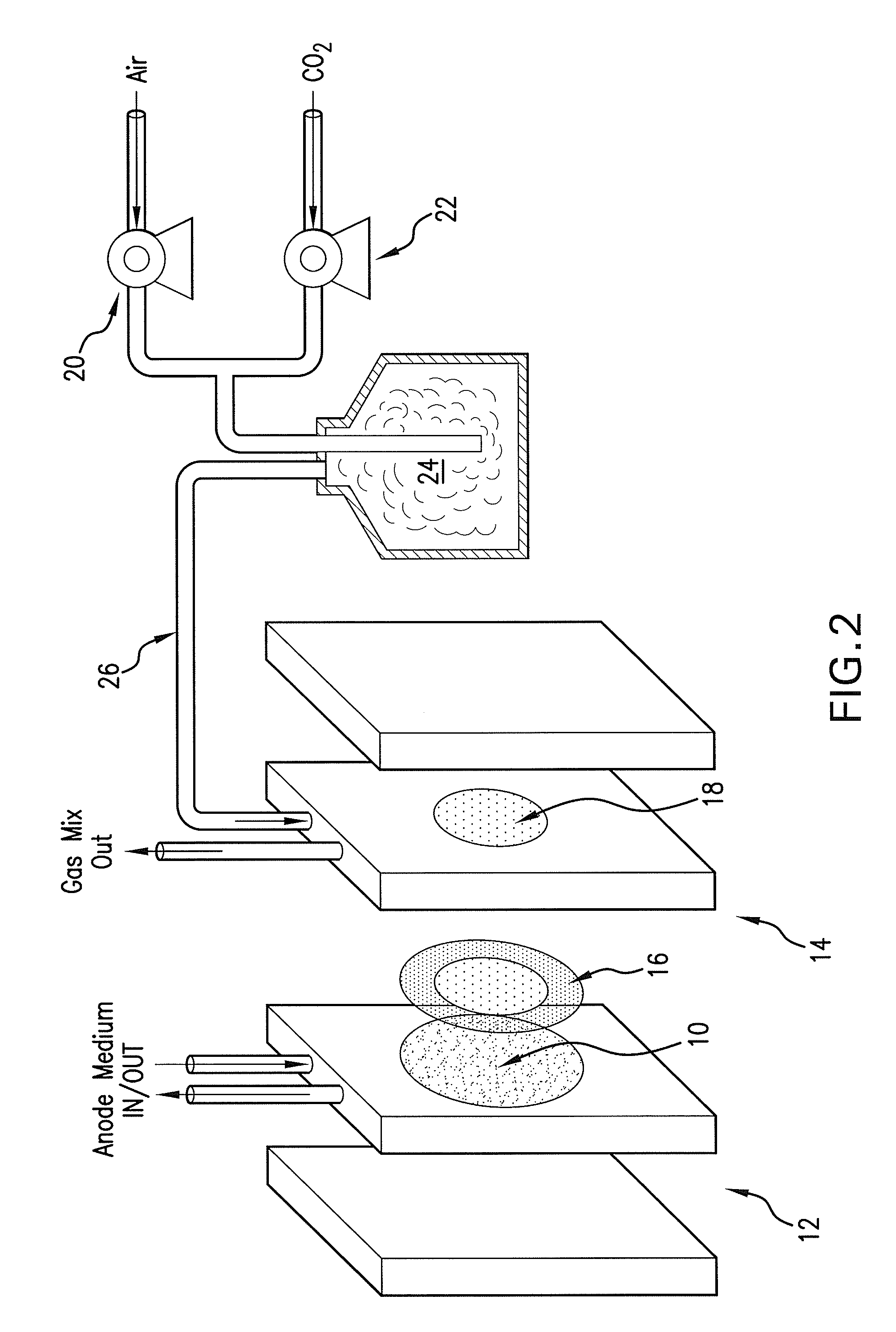Bicarbonate and carbonate as hydroxide carriers in a biological fuel cell
a fuel cell and bicarbonate technology, applied in the field of fuel cells, can solve the problems of reducing voltage efficiency, limiting proton transport between the anode and the cathode compartment, and acidification of the anode compartment and ph gradient between the compartments, so as to reduce the ph gradient
- Summary
- Abstract
- Description
- Claims
- Application Information
AI Technical Summary
Benefits of technology
Problems solved by technology
Method used
Image
Examples
example
[0029]The following example is included to demonstrate preferred embodiments of the invention. It should be appreciated by those of skill in the art that the techniques disclosed in the example represent techniques discovered by the inventors to function well in the practice of the invention, and thus can be considered to constitute preferred modes for its practice. However, those of skill in the art should, in light of the present disclosure, appreciate that many changes can be made in the specific embodiments which are disclosed and still obtain a like or similar result without departing from the spirit and scope of the invention.
[0030]A continuous MFC was used to carry out experiments to evaluate the inventors' discovery. The configuration of the MFC is shown schematically in FIG. 2. The volume of anode compartment 10 was 20 mL and was filled with graphite granules with 50% porosity. The anode inoculum was a mixed culture of acclimated anode-respiring bacteria (ARB). The anode 12...
PUM
| Property | Measurement | Unit |
|---|---|---|
| pH | aaaaa | aaaaa |
| concentration | aaaaa | aaaaa |
| combustionless electrical energy | aaaaa | aaaaa |
Abstract
Description
Claims
Application Information
 Login to View More
Login to View More - R&D
- Intellectual Property
- Life Sciences
- Materials
- Tech Scout
- Unparalleled Data Quality
- Higher Quality Content
- 60% Fewer Hallucinations
Browse by: Latest US Patents, China's latest patents, Technical Efficacy Thesaurus, Application Domain, Technology Topic, Popular Technical Reports.
© 2025 PatSnap. All rights reserved.Legal|Privacy policy|Modern Slavery Act Transparency Statement|Sitemap|About US| Contact US: help@patsnap.com



